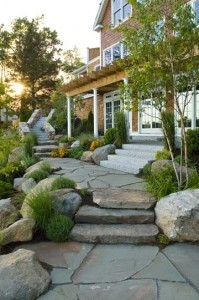- BY WP Management Team Dev
- POSTED IN Uncategorized
- WITH 0 COMMENTS
- PERMALINK
- STANDARD POST TYPE
For most homeowners, designing a landscape from scratch is an a once in a lifetime opportunity. The typical home landscape is formed by small purchases that are placed here and there in the landscape or wherever there is room. When first getting started, it’s tempting to rush out and buy a whole bunch of plants without planning. A garden is something that is always in progress so doesn’t need to be filled in right away.
Start with a clean slate. If there’s a particular plant that’s not working, remove it right away. For plants with seasonal debris it’s easy to forget about them until the next season when the problem arises once again. Remove problem plants; they won’t go away on their own. Small shrubs can be sawed down and dug out, but bigger plants may need a professional tree trimmer with a stump grinder.
Landscapes are supposed to be attractive as well as functional. To get the most out of the landscape, design around the critical areas. The entry way, backyard, and patio are a few of the most important places. Analyze your family’s needs and wants and look at the property features to see what needs to be emphasized or deemphasized. The typical suburban backyard requires a grassy play area for children and pets and an adult area for entertaining or relaxing on the patio or deck. Each of these areas can be accented with appropriate plants. Depending on the area, plants with berries or large prickly thorns may not be the most family and pet-friendly choices. Screen and hedge plants can be planted around the property for privacy or to shield an unsightly view of the neighbors driveway and trash waste station.
Once the list of needs and wants are established, it’s easy to design a functional landscape that improves the land use. Sketching the house and yard is a good way to decide how to break up the yard. The final step of planning a landscape is selecting the plants. Most low-maintenance landscapes are relatively simple with large plantings of a limited number of plants. Planting areas with groups of plants cuts down on the number of tasks required to keep the area maintained. It’s important to have plants of differing heights to add perspective to the viewer. Using a photo or sketch of the home makes it easy to play around with different combinations to see which areas benefit most from the taller elements.
The largest plants will determine how the rest of the landscape lays out. Once the main elements are in place the remaining elements can be worked in between; shrubs and taller perennials followed by the low growing creepers and groundcovers to fill in the spaces. Before planting, consider how big the tree or shrub will grow in three or five years. Many landscape plants grow six inches to a foot every year. Using ample spacing will pay off in the long run with bigger healthier plants.

